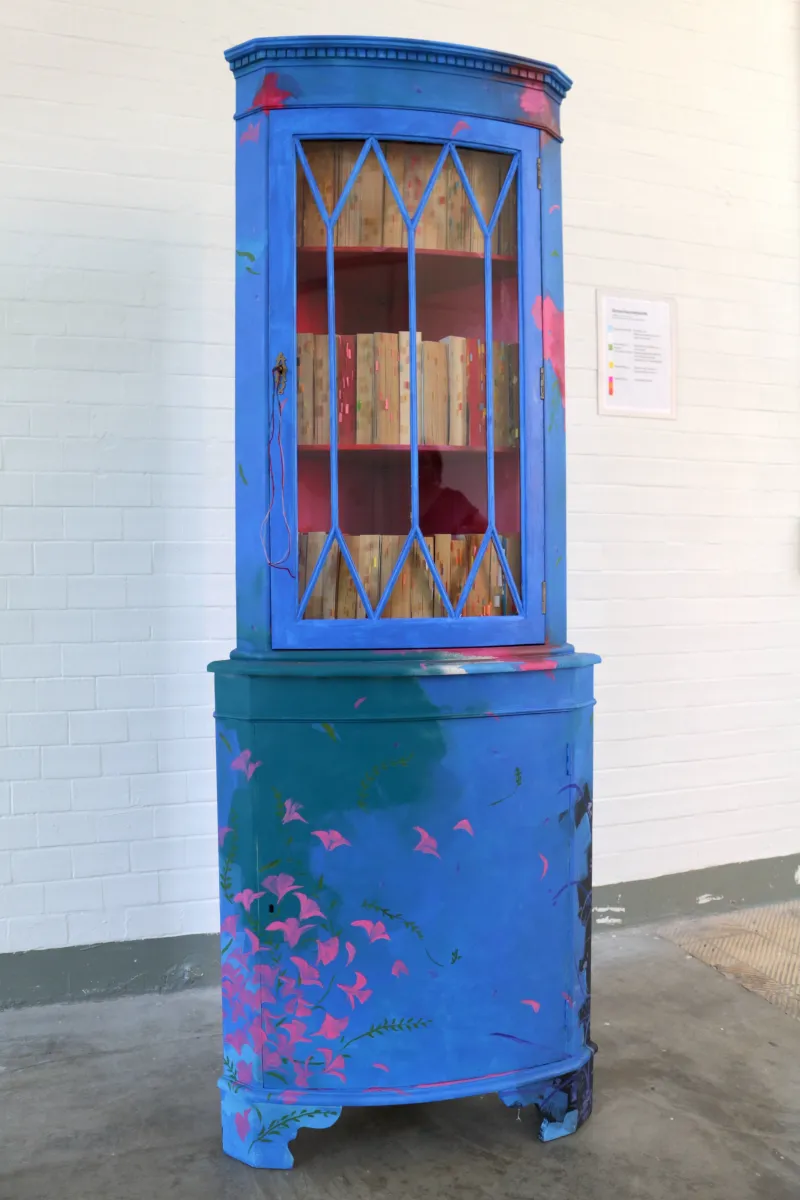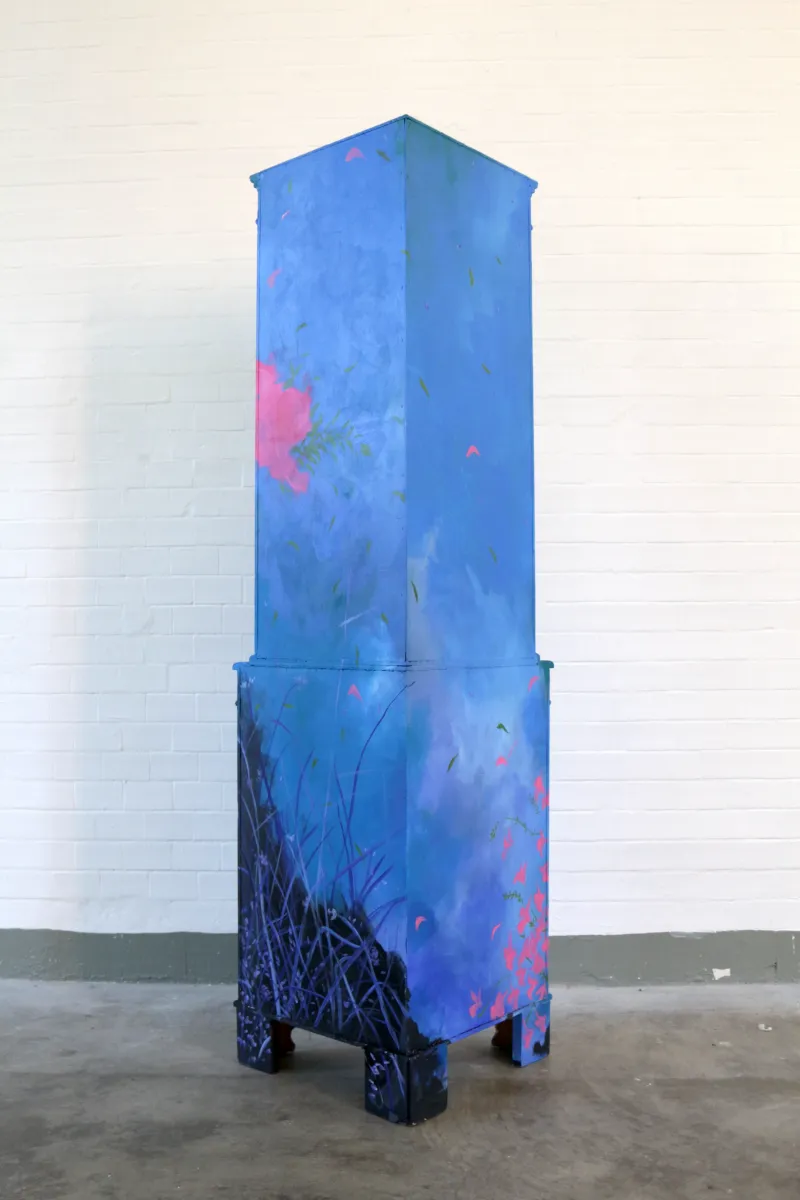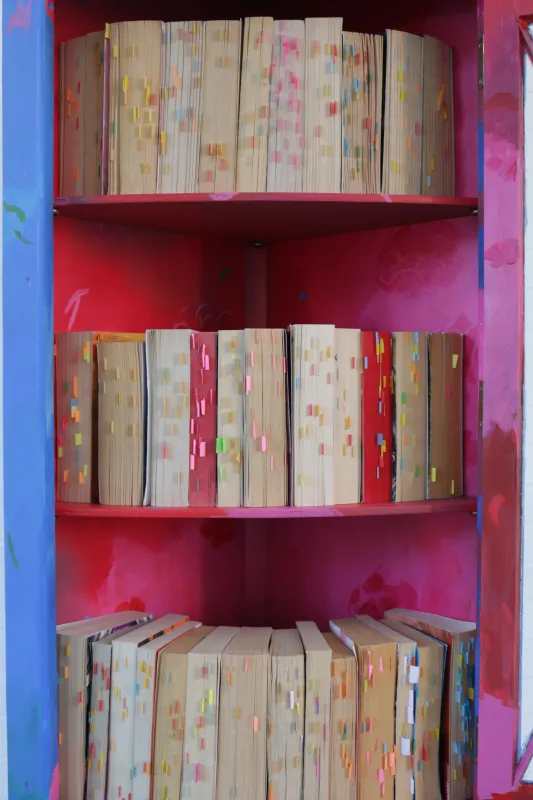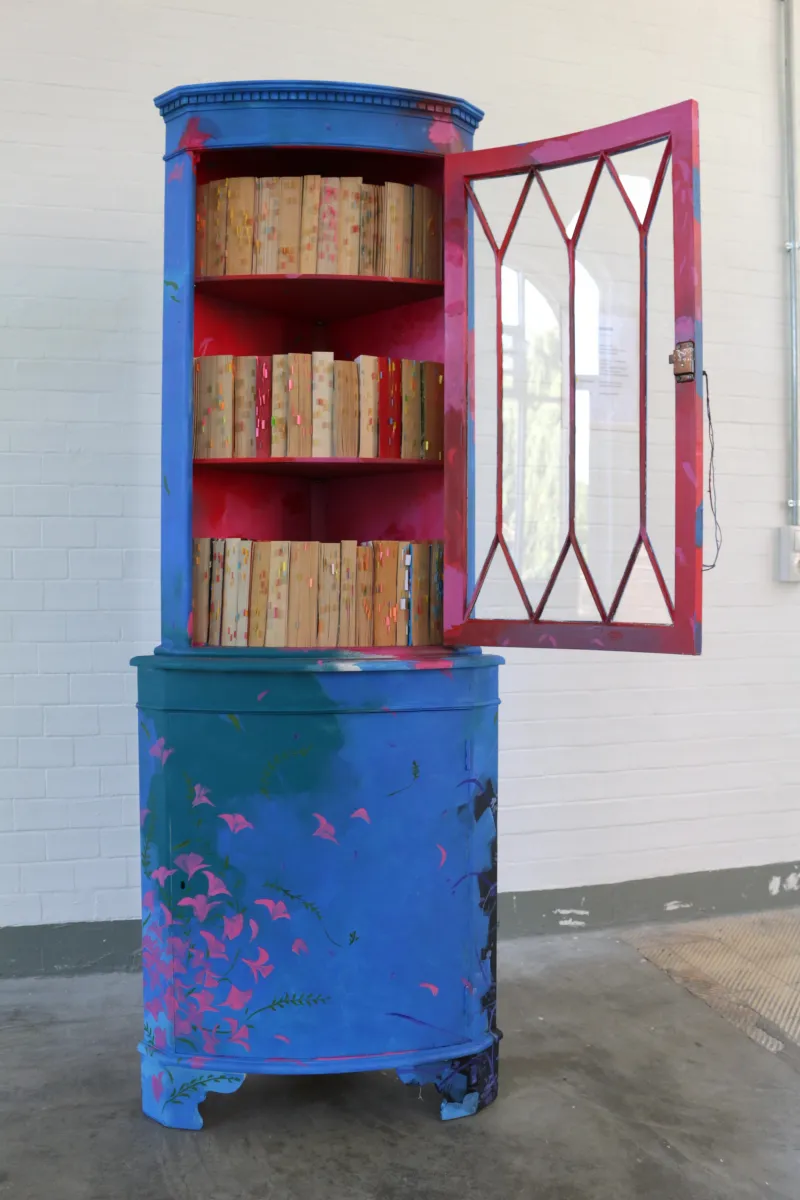🌷🔑Schoolgirl Tings🌷🔑
EN: Romance novels marked for exploitative tropes and locked in a painted cabinet. After the secured Staff Reading cabinet in the library of my high school.
DE: Liebesromane, deren ausbeuterische Tropen gekennzeichnet und in einem bemalten Schrank eingeschlossen sind. Nach dem gesicherten Personalleseschrank in der Bibliothek meiner High School.
Critical readings of regency romance novels revealed the following themes, which are page marked and sorted by colour:
Heteronormativity - the assumption that heterosexuality is the only sexual orientation
Rape - sexual assault of a character in the novel
The ethnicised Other - eroticisation of racialised characters in the novel
Love-making - consensual erotic contact between characters in the novel
In the realm of historical / 'regency' romance, all of these themes are necessarily warped; their intractability from the genre is symbolised in the novels' typical commissioned cover artwork.
This cabinet's 'cover-painting' excludes the tropes of an embracing couple (a woman suppliant, a man brutally impassive) and castles or great houses (implying that true romance is only possible for those wielding fealty, wealth; colonial power), focusing, instead, on the blossoming and dispersion of delicate flowers (priceless virtue; virginity).
Bereft of human figures and architecture, what remains is eroticised landscape.
HEIST
At some point in my schooling, possibly in a rare lull when my class was not preparing for an exam, I staged my first heist of this cabinet.
Using a large paperclip to pick the lock, I carefully extracted a maximum of 7 novels and fanned out the remaining books so as not to leave noticeable gaps. A system developed whereby I speed-read the books, marked the saucy bits with a dog-ear or pronounced spinal crease and distributed these marked novels to a select group of friends. Having the erotic pages marked helped ensure a rapid return of the books. One classmate – an outsider who was frequently bullied by the rest of the class, including myself – got to know of the operation that I was running. This was its undoing.







